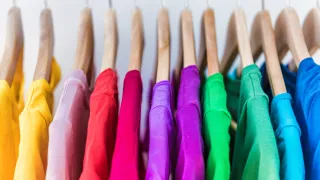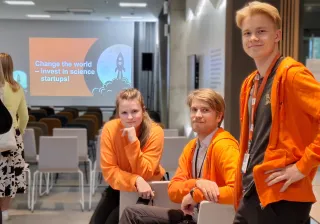From 2025 onwards, it will be mandatory to have separate collection processes for textile waste in the EU, and Finland aims to be a pioneer of this development. Taking textile waste to landfills has already been banned, and the next step is to find new ways to reuse textile instead of incinerating it. Research by VTT and Aalto University reveals that dyeing methods and decolourization affect the reuse of textiles.
VTT already has a long-standing foundation of research into the chemical recycling of cotton textiles and their decolourization as part of this process. VTT and Aalto University have now joined forces to examine the compatibility of different dyeing methods and colour removal. The study involved using different methods to dye cotton materials and then decolourizing the textiles.
The dye and the dyeing method proved to be decisive for colour removal. In other words, it is only possible to effectively reuse waste textile if information is available on the dyeing methods used. Textiles with different types of dye would have to be sorted apart if the goal was to remove the colour completely for the purpose dyeing the textile again.
A paper on the study (Research Journal of Textile and Apparel, 06/2019, Volume 23, Issue 2.) titled 'Colour management in circular economy: decolourization of cotton waste' has been granted the Highly Commended Paper award in the 2020 Emerald Literati Awards. According to the publisher's representative, it is one of the most exceptional pieces produced in 2019.
Decolourization resets the textile
On the industrial scale, dyeing and decolourizing textile fibres has a high environmental impact: the process consumes chemicals, energy, water and generates waste water. For this reason, we need to know already at the manufacturing stage what is going to happen to the fabric and the dye when the textile turns into waste. If the textile fibre will be bleached and re-dyed, easily removable dyes should be used.
“Decolourization turns a textile light-coloured again. It produces textile fibre that is easy to dye and print. During this process, the fibres can also be purified from other harmful chemicals, avoiding their transfer to recycled fibre products. All this opens up new opportunities for reuse. Clothing made from recycled textiles doesn’t have to look recycled”, says Principal Scientist Marjo Määttänen from VTT.
On the flip side, a recycled look is a desirable feature for some products made from waste textile. In this case, there is no need to separate textiles dyed with different methods and try to remove the dye. Textiles dyed with a particular method could also be identified and collected separately, allowing the colours to remain as is.
Capturing the history of the fibre
The transition to a circular economy for textiles requires transparency and new methods to collect information on the history of the fibre.
“For us to be able to use textile waste, we need information on what kind of fibres it contains, what kinds of dyes and methods it has been dyed with, and what kinds of chemicals have been used in the process. This information should be collected at the manufacturing stage and stored alongside the textile fibre until it reaches the end product”, says Professor Kirsi Niinimäki from Aalto University.







